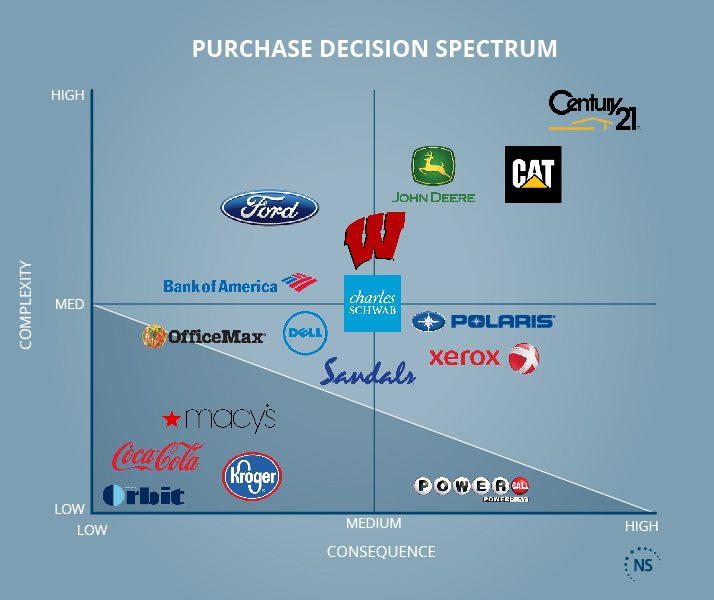The field of marketing is undergoing a paradigm shift. The conventional lines of B2B and B2C have become less relevant, and we’re seeing evidence of it from all corners. Take the absorption of BtoB Magazine into Advertising Age, or the acquisition of the Business Marketing Association (BMA) by the Association of National Advertisers (ANA). Clearly, the industry is moving away from the siloes of business and consumer marketing.
At Nelson Schmidt we’ve watched this trend evolve and have refocused the conversation on the customer journey. For us, it’s not B2C versus B2B – it’s impulse buy versus considered purchase. It’s about the buyer journey, not the channel to market. This insight is redefining our marketing approach – we are now less focused on siloes and more on commonalities. We call this approach considered purchase marketing.

Considered purchase marketing focuses on each customer’s unique journey and mindset to connect emotionally and rationally.
What defines a considered purchase?
The chart illustrates how different purchases fall across a spectrum of complexity and consequence. A decision such as what soda to drink, pack of gum to chew or where to buy groceries are choices that have limited complexity and do not often have lasting emotional or financial consequences.
Applying a considered purchase marketing strategy
While a considered purchase marketing strategy can be applied to many different types of purchases, the decision-making journey will be different for every buyer, and is largely affected by an individual’s interests, financial stability or other circumstances in his or her personal life.
For example, if an individual has strict dietary needs, buying groceries is a complex decision and the outcome of the purchase can have greater health and/or financial consequences. Additionally, the purchase decision is more complex for someone purchasing his or her first car than it would be for someone who has experience with car buying. These varying circumstances further demonstrate the need for marketers to fully understand the customer buying journey and the emotions that can affect the decision-making process.
Historically, we’ve seen B2B marketers focus on the rational factors of a buying decision and the value proposition of their branded solutions. While these are important, the emotional drivers of a buying decision are often missing from the conversation. Furthermore, customers require different information and are influenced by different factors as they move from the discovery phase to evaluation, active shopping and finally purchase.
What this means for marketers
At Nelson Schmidt, we are digging in to understand the buyer and their needs more intimately. By addressing all of the aspects of the customer mindset – what they are thinking, doing, experiencing and feeling – throughout the decision-making process, we are able to connect with them both emotionally and rationally, which ultimately leads to a brand’s success and delivers more customers. This requires a new set of tools and technologies that we’re applying to the planning and execution of marketing strategies for our clients.
The time is now for marketers to stop thinking in the traditional siloes of B2B and B2C. Instead, examine all aspects of your customer journey and build comprehensive marketing and communications programs that reach buyers with the right messages through the right channels at every unique stage of the decision making process.
Start by asking yourself: is my brand a considered purchase?
Originally Published 2017






